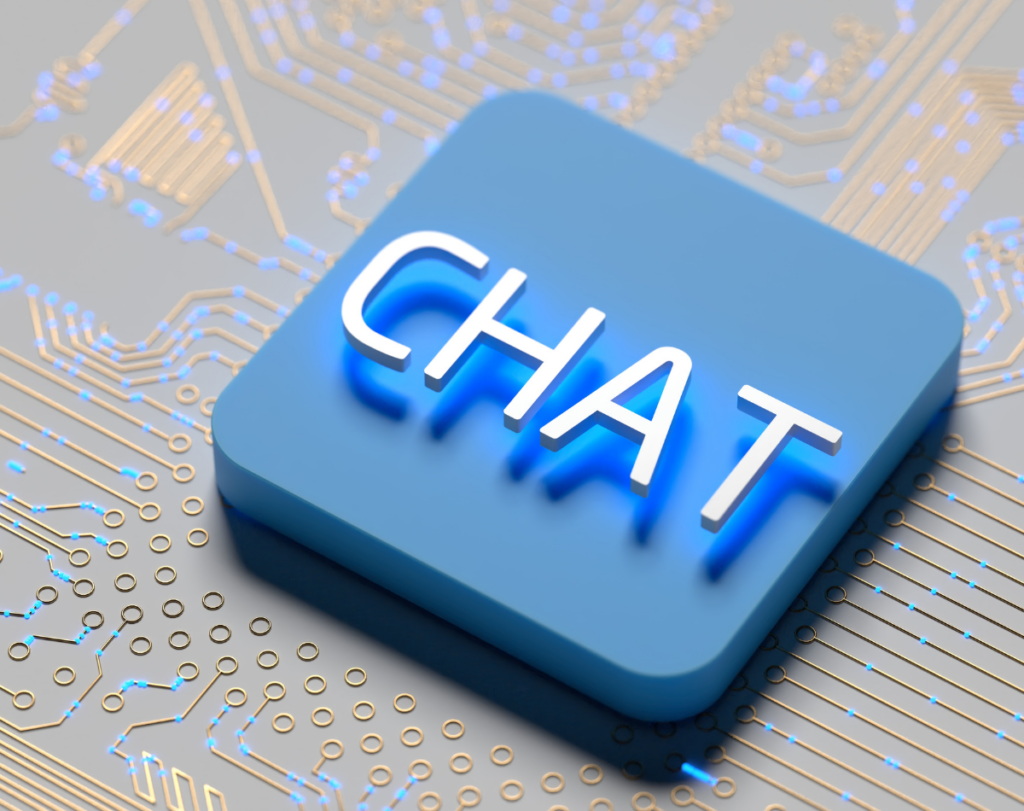Step Up to AI, But Tread Lightly

Ode to Association Marketing Professionals
By ChatGPT
In marketing’s realm, an executive ponders, seeking AI’s power, new pathways to wander. With data-driven insights, campaigns take flight, Association marketing soars to new heights.
AI analyzes trends, revealing new ways, unveiling patterns, unlocking marketing’s maze. Personalization thrives, engagement’s secured, executives empowered, strategies assured.
Influencers are found, partnerships bloom, social media conquered, marketers consume. But ethics remain, as humans guide the way, AI’s potential harnessed, in balance we stay.
So, association marketing executives embrace, AI’s alliance, a remarkable embrace. With vision and grace, strategies refine, And the marketing world reaches its prime.
Is ChatGPT’s style a little stiff? Should we believe the hype?
I don’t think the bot is ready for a poetry slam. But technology moves fast. Its Carl Sandburg moment may arrive sooner than we think.
In the meantime, AI offers marketers interesting opportunities as well as reasons for caution. Jane Pearson, .orgSource Vice President of Marketing and Communications Services, and Amy Williams, President and CEO, Brand Health Media, have been exploring the pros and cons. They discussed their findings during a recent Association 4.0 podcast.
Understand the Context
Before considering Jane and Amy’s ideas, it’s helpful to have some context about this bot that so effortlessly hooks users into time-melting conversations.

ChatGPT, from OpenAI, is a large language model within the family of generative AI systems. GPT is short for Generative Pre-Trained Transformer. It was launched in November 2022.
AI models use algorithms to recognize patterns, learn from specific sets of data, and provide responses based on that education.
You are already experiencing AI’s magic in many applications. For example, Amazon’s Alexa along with the site’s personalized recommendations for movies, books, and music are provided by various AI models.
If you query ChatGPT frequently, you’ll notice that it regularly references its pedigree. That bragging is not unfounded. Large language models (LLMs), adept at communicating with human speech, represent a significant advance in computing. But it’s important to understand that strength is also currently the source of limitations.
LLMs undergo a rigorous “training period.” ChatGPT’s education involves learning to predict the next word in a sequence correctly based on 45 terabytes (one terabyte is equal to 1 trillion bytes) of text from books, articles, websites, social media, and a multiplicity of other sources. The bot is a mimic, albeit at a very sophisticated level.
In contrast, knowledge models are designed for housing and accurately analyzing information. They are built to identify patterns and connections within that data. This is an important distinction. It’s easy to imagine that ChatGPT functions like a gigantic AMS when, in fact, it is quite a different animal.
LLMs do include the ability to discern relationships; but because language, rather than information, is the focus, they may not always provide a dependably correct answer.
Without guardrails, or monitors for inputs and outputs, LLMs are subject to “hallucinations” or random incorrect responses. At this time, out-of-the-box AI applications can’t be trusted to deliver accurate information without human oversight.
In addition, training an AI is complex and expensive. (That’s a major understatement.) A single model can cost millions of dollars. The current free iteration of ChatGPT’s training ended in September 2021. So, its expertise is frozen at that point in time.
The bot offers this description about the status of its intellect. “While ChatGPT cannot actively learn from user interactions or update its knowledge, it can be fine-tuned on specific datasets or for specific tasks to improve its performance in those particular domains. Fine-tuning involves training the model further on specialized data to adapt it to specific use cases, but this process is different from the continual learning or updating of knowledge.”
Proceed With Caution
Jane and Amy are excited about AI’s potential to take marketing in new directions. But they also acknowledge that the adventure is just beginning. “AI is a bit of a double-edged sword,” Amy observed. If you are using it, tread lightly.

“As ChatGPT is quick to assert, it is a language model, not a knowledge model. Keep the limitations of that structure in mind. For example, the bot’s ability to create a polished blog post in a matter of minutes is nothing short of amazing,” Amy noted. “But, unless you are familiar with the topic and can evaluate whether the information is correct, fact-check any significant data, especially citations. ChatGPT has a reputation for jumbling references. Due diligence is needed.
“Taking the bot too literally could also result in the unpleasant surprise of finding sections of your post duplicated by other authors,” Amy advised. “After you’ve acquired some experience using ChatGPT, or one of its competitors, you’ll find that AI-generated content is fairly easy to recognize based on a standardized style. At this point, its talent seems to lean toward idea generation, outlining, and recitation, rather than originality. However, that may soon change.”
“Sharing is another area for caution,” Jane observed. “Avoid uploading intellectual property. Here’s what ChatGPT says about its handling of user information.”
“As an AI language model, I don’t have the capability to store or remember specific information or code you provide during our conversation. Each interaction with me is treated as a separate and isolated session. Once the session ends, the data is not accessible or retained.
“It’s important to note that while I strive to provide accurate and helpful information, I can’t guarantee the confidentiality or security of any information you share with me. If you have sensitive or proprietary business content, it’s always best to exercise caution and avoid sharing it in a public or unsecure environment.”
“I’d pay close attention to that disclaimer,” Jane advised.
Get on the Learning Curve
With such a powerful tool there are multiple reasons for watchfulness and caution.
“The people who are closest to this technology have already sounded an alarm,” Amy said. “Geoffrey Hinton, the psychologist and computer scientist, known as the godfather of AI, resigned from Google with a warning about his protégé’s potential dangers. In March, he along with dozens of others in the AI space, signed an open letter “calling for a pause on any developments more advanced than the current version of ChatGPT so that robust safety measures could be designed and implemented.” (BBC World News)
If the personal computer was transformational, AI is revolutionary. Meaning that it is disruptive in the most aggressive way. Yes, there are dangers, but that profound impact on culture and society is the best reason to begin understanding this technology and to become an early adopter.
Free Time for Strategy
“Associations, especially smaller groups, can already begin using AI to help marketers work smarter,” Jane said. “Often copywriting, campaign planning, media buying, and web management are all assigned to the same over-extended staffer. ChatGPT can provide a running start. You can brainstorm, organize, and draft relevant content—all in a matter of minutes.

“That efficiency might give junior employees, who are called on to do rote and repetitive tasks, the bandwidth to contribute in ways that are more strategic.”
“Marketing has expanded to include responsibilities we couldn’t imagine five years ago,” Amy noted. “Managing social media is a job in itself. AI will definitely allow staff to work smarter. Imagine having a bot on the website that could intelligently answer questions about your conference and membership benefits like, ‘Where is the networking reception? What transportation is available to the convention center? Why should I want to be certified?’
“With practice, teams can also begin using AI to produce content more quickly and improve the search optimization of their documents,” Amy advised. “It’s just a matter of developing guidelines and appropriate fact-checking processes. I love the idea of becoming more strategic. We could all use additional time in our day. AI technology has the potential to create that bandwidth, which will greatly benefit association marketing teams.”
Improve Your Image
“Images and graphic design are another area where AI is a game-changer,” Jane added. “Association marketers always want to feature members in their publications, but finding the right photo can be a frustrating search. When I was promoting the supply chain industry, it was an ongoing challenge to locate a picture of an executive in a factory setting.”
AI’s ability to manipulate images is prodigious. It can–
- Remove or add objects to images
- Change backgrounds
- Retouch imperfections
- Generate entirely new images that don’t exist in the real world
ChatGPT and Bard, Google’s competing AI platform, can perform all the functions listed above; however, the interface for the public is still in development. AI graphics enhancements that are currently available include—
- Adobe Photoshop features tools for background creation and retouching
- Canva’s “Magic Eraser” deletes objects and “Auto-adjust” can improve color, contrast, and brightness
- Dall-E 2 is a text-to-image model that generates a picture based on text commands. It is still in beta testing. But you can sign up to try it here.
- Midjourney is similar to Dall-E 2 but at an earlier stage of development. You can also enroll to try Midjourney but you will need to be invited to actually test it.
- Microsoft Designer, a Canva competitor, has new AI technology at its core to help augment creative workflows and overcome creative roadblocks
Text and images are AI’s bread and butter. But this is one humongous sandwich. It’s exhilarating to have such a rich topic to explore and not surprising that the complexity includes a big helping of cautions and caveats.
Although ‘tread lightly’ is the phrase of the day, by all means, step forward. Knowledge is the antidote to disruption. And disruption is AI’s middle name.
Amy and Jane’s conversation covered more ground than I’m able to summarize in one post. I’ll feature more of their suggestions for marketers in the near future. You can listen to their entire podcast here.

